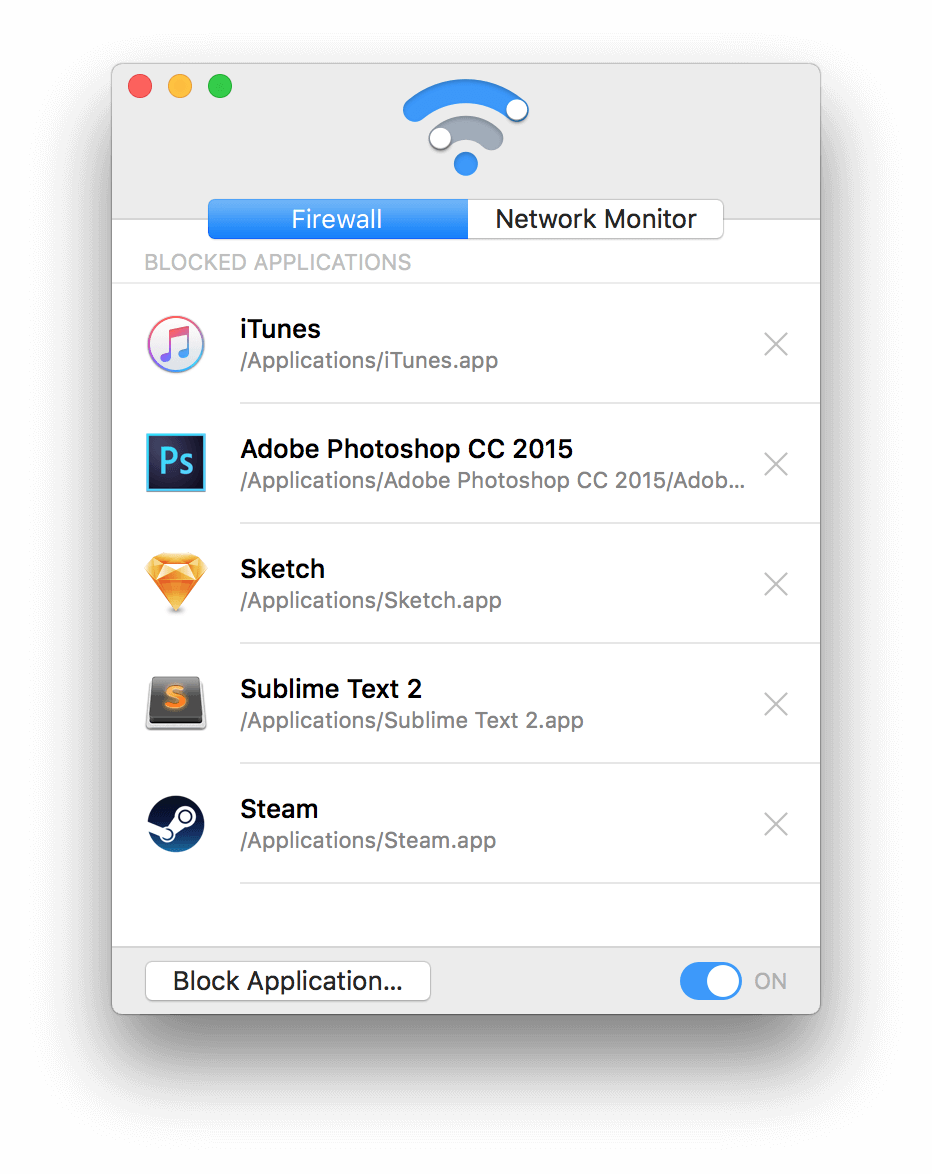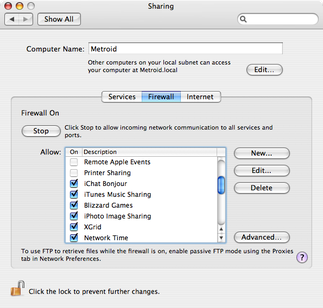AnyConnect Secure Mobility Client v4.9.0195 – Windows, Mac, Linux. Published on 06 September 2020 By Administrator 41024 downloads. Download (zip, 69.64 MB) cisco-anyconnect-490195.zip. Complete Cisco AnyConnect Secure Mobility Client for Windows, Mac OS X 'Intel' and Linux (x86 & x64) platforms for Cisco IOS Routers & ASA Firewall Appliances.
- + Firewall protection + Anti-ransomware + Windows, Mac, iOS, Android + Up to 10 devices. Reasons to avoid. For a free product, Comodo Firewall offers a healthy serving of features.
- The Mac built in firewall controls incoming connections only. Lulu controls outgoing connections too, and is still relatively simple. Little Snitch is far more detailed and not free.
What version of avast would you use for mac computer. Firewall is a component of Avast Premium Security and Avast Omni, which creates rules each time an application or process starts for the first time. These rules determine how Firewall behaves toward each application or process when it connects to the internet or to another network. Although advanced users can manage these rules or create new ones, we recommend you only modify your Application Rules if absolutely necessary. In most cases, Firewall formulates optimal rules without your input.
Create a new application rule

Default rules are created automatically for applications from known and trusted sources the first time you start the application after Avast Premium Security or Avast Omni is installed. Application Rules are organized into groups, predefined according to application vendor. To add an application to an existing group:
- Open the Avast user interface and go to Protection ▸ Firewall.
- Click Application settings at the bottom of the screen.
- Click New application rule and select a group (vendor).
- Locate and select the executable file of the application you want to add.
- Click the group name, then use the orange bars to indicate the level of access you want to allow.
A lot of Mac users have a false sense of security, thinking that their Macs are somehow immune to what ails WinBlows computers but the virus writers have paid attention to the increasing popularity of Macs so I wouldn't work from the assumption that you don't need the at least the protection of a firewall. Avast Free Mac Security offers free and still excellent malware protection with nearly zero system impact in the background. It also includes password management. However, it does slow down a computer during scans and lacks some useful features, such as a firewall or privacy features.
Avast for mac sale. To create a new group, click New Group and provide a name for the group.
Adjust access restrictions
You can set connection allowances for each application or process to determine how strictly Firewall monitors incoming or outgoing communication.
Click a group (or vendor name) in the Application column, then use the orange bars in the Allowed connections column to set the authorization level for a specific application:
- One bar (Friends out): outgoing connections with Friends networks only.
- Two bars (Friends in/out): incoming and outgoing connections with Friends networks only.
- Three bars (Internet out): all outgoing connections to the internet.
- Four bars (Friends in and Internet out): incoming connections with Friends networks only, and all outgoing connections to the internet.
- Five bars: (All connections): all incoming and outgoing connections to the internet.
- To Block all connections for an application, hover your cursor over the orange bars and click the red block symbol that appears.

Set actions for unauthorized connections
In addition to defining the types of connections you authorize for applications or processes, you can also specify how Firewall behaves when it detects a non-authorized connection. To define Firewall behavior for a non-authorized connection:
- Click a group (or vendor name) in the Application column to open the list of applications or processes in that group.
- Select an application or process to expand its individual communication settings.
- Use the drop-down menu to manage the program's behavior. The following behaviors are available:
- Default rule: Firewall decides to allow or block connections based on the settings of the active Firewall Network profile (Private or Public).
- Auto-decide: Firewall allows connections with verified applications, but blocks connections from unknown or suspicious applications.
- Block: Firewall blocks all other connections.
- Ask: Firewall asks you to decide if you want to allow or block a connection each time a new request is received. Selecting this option may result in frequent and potentially obtrusive alerts.
- Private: a lower level of security suitable for when your PC is connected to a trusted network such as your home or work network. This profile enables better connectivity, and permits all communication within the network.
- Public: a higher level of security suitable for when your PC is connected to a public network such as in a cafe or airport. Because public networks present greater security risks, no incoming communication is permitted when this profile is set.
Best Firewall For Mac
Specify authorized ports
Tighten rule restrictions even further by specifying the network ports each application uses for communication when an incoming or ongoing connection is allowed. To specify authorized ports:
- Click a group (or vendor name) in the Application column to open the list of applications or processes in that group.
- Select an application or process to expand its individual communication settings.
- Specify the Outbound ports and Inbound ports that you allow the application or process to communicate with. Specify ports in the following ways:
- Type specific port numbers into the text box. For multiple ports, separate each port number with a comma.
- Select All from the drop-down menu to authorize communication with all ports.
- Select a predefined port number from the drop-down menu.
- Optionally, configure Packet rules from the Application rules screen by following steps 1-2 above, then clicking Packet rules. While Firewall uses Application Rules to control traffic according to individual rules for programs or services, Packet rules can also be configured to control network traffic using specified connection parameters. Packet rules enable you to view and manage Firewall rules according to the information contained in network packets, such as network protocols, source or destination IP addresses, or local and remote ports.
Do I Need Firewall With Free Avast For Mac Review
443,80. For information about the correct network port to specify for an application, contact the application vendor or refer to the application's documentation or support pages.Mac Firewall On Or Off
- Avast Premium Security 19.x
- Avast Omni 1.x
- Avast Premier 19.x
- Avast Internet Security 19.x
Do I Need Firewall With Free Avast For Mac
- Microsoft Windows 10 Home / Pro / Enterprise / Education - 32 / 64-bit
- Microsoft Windows 8.1 / Pro / Enterprise - 32 / 64-bit
- Microsoft Windows 8 / Pro / Enterprise - 32 / 64-bit
- Microsoft Windows 7 Home Basic / Home Premium / Professional / Enterprise / Ultimate - Service Pack 1, 32 / 64-bit
One of the most important tools in your online security arsenal is a firewall. Firewalls block incoming and outgoing network connections and can often be configured to be as strict or as relaxed as you like. You can also usually configure a firewall to prevent your Mac from being “pinged” – where a piece of data is sent to it over the network to check if it’s “there.”
Firewalls can be software or hardware, though most these days are software. macOS has its built-in firewall that can be configured in the Security & Privacy pane of System Preferences and your broadband router probably has one too. Your router’s firewall, if it has one, can be turned on and off in the settings webpage for the router.
Tip
Want to know how to turn on the firewall on your Mac? Just go to System Preferences > Security & Privacy > Firewall and turn it on.

Why download another Mac firewall?
If your Mac already has a firewall built-in, why would you consider a third-party version? Well, for one thing, the macOS firewall only blocks incoming connections; it doesn’t protect you from security threats that come from outbound traffic. Though there are advanced options tucked away, it’s not as configurable as some third-party firewalls.
Did you know?
In addition to a firewall, it’s a good idea to use an anti-malware tool to scan your Mac regularly and keep it safe. CleanMyMac X does just that. You can use it to scan your Mac manually, and it will compare what it finds against a database of known malware. Or set it to monitor your Mac in real-time, so that it protects it automatically. Download CleanMyMac X – a free trial is available.
The best firewalls for your Mac
Little Snitch
Little Snitch has been around for almost as long as macOS. Its goal is to block apps from making outgoing network connections unless you explicitly choose to allow it. This is useful for a couple of reasons.
It stops apps from contacting a server and sending data about you to it.
It alerts you to software that shouldn't be on your Mac i.e., malware, and is trying to connect to a host server.
Firewall Free Download For Mac
When an app initiates a connection to a server, Little Snitch alerts you and offers you the opportunity to allow it to connect or to prevent it. It learns from your decisions and creates rules based on them. Neatly, there’s a silent mode that hides alerts so that you’re not bombarded with them – there are a lot of them at first. You can then come back to alerts later to make decisions and create rules.
Lulu
We mentioned earlier that the macOS firewall is good at blocking incoming connections. Lulu complements that by blocking outgoing connections, similarly to Little Snitch. By default, it blocks all outgoing connections. If you decide to allow an app or service to connect, every attempt made by that app or service will be allowed. Lulu’s source code is published on GitHub so anyone can inspect it.
HandsOff
Unlike Lulu and Little Snitch, HandsOff blocks both incoming and outgoing connections. And it allows you to closely monitor and control apps that use internet connection to send information back to a remote server. Besides, HandsOff can also block domain name resolving, multiple subdomains, and offers protection from trojans and worms.
HandsOff’s options are more finely-tuned than most, allowing you to block all outgoing connections from an app or only those to a specific domain, subdomain, or IP address. You can also choose to block the connection once, until the Mac is restarted, or permanently.
Radio Silence

Radio Silence is the simplest and most elegant of the firewalls available for macOS. There’s nothing to configure and no pop-up windows to distract you. One small window is its only user interface element. That window is split into two tabs.
Antivirus Free

One, titled Network Monitor, displays all the apps that have open network connections. Next to the app is a number showing you how many open connections it has open. Click on that number, and you can see a list of connections.
Murus Pro
Murus Pro consists of two apps, Murus and Vallum. The former will perfectly complement the macOS built-in firewall by providing an interface that allows you to create rules for incoming connections. The latter, Vallum, is similar to Little Snitch and Radio Silence – it allows you to monitor and block incoming connections.
Murus allows you to drag and drop elements to create sets of rules from pre-created presets. Or, you can re-write your own rules from scratch. If what you want is to fine-tune the built-in macOS firewall, Murus could be the ideal tool.
Free Computer Firewall
Vallum monitors and intercepts outgoing connections and lets you block them. It sits in the menu bar until you decide to configure it. When you do, like Murus Pro, you can do it by dragging and dropping. For example, to prevent an app from making outgoing connections, you just drag it from the Finder onto the Vallum window. You can modify the firewall rules for each app manually, or use one of the predefined presets.
There are several very good firewall tools available for Macs. Some complement Mac’s built-in firewall and block incoming connections; others are focused on outgoing connections. Whichever you choose, it’s a good idea also to use additional security and Mac maintenance tool such as CleanMyMac X.
Firewall For Mac
You may be surprised at just how many network connections some apps make. And next to that number is a Block button, allowing you to prevent the app from making connections. Press that button, and the app shows up in the other tab, Firewall. That tab lists all the apps you’ve blocked from making connections. It’s a very simple but effective tool that has won praise and rave reviews from some of the most well-known Mac blogs and websites.